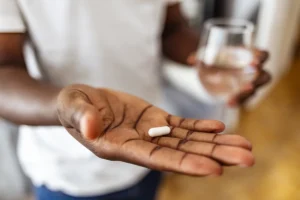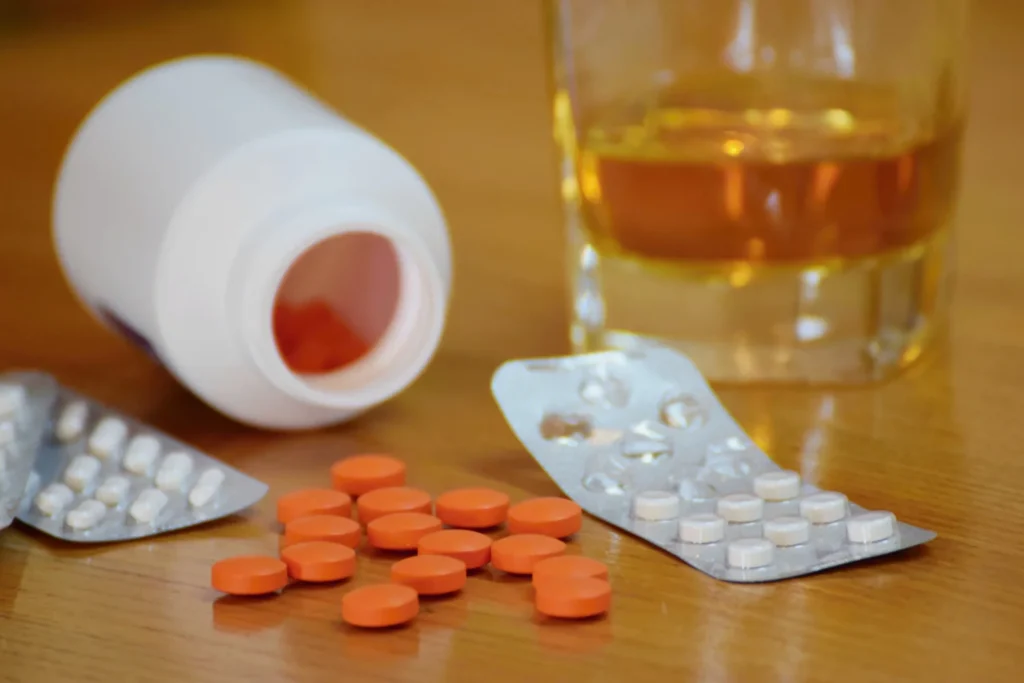Are you or someone you know grappling with alcohol cravings and looking for effective ways to manage them? It’s a common struggle for many on the path to recovery from alcohol dependency. One potential solution that might not be as well-known is Gabapentin, a medication typically used to treat nerve pain and seizures but also found to potentially ease alcohol cravings.
In this blog, we’ll dive into the role of Gabapentin in managing alcohol cravings. We’ll explore how it works, what the research says about its effectiveness, and discuss both the benefits and the risks. So, let’s get in and unpack everything you need to know about Gabapentin for alcohol cravings.
Contents
- 1 Understanding Gabapin and Its Uses
- 2 How Gabapentin Helps Reduce Alcohol Cravings?
- 3 Pros and Cons of Using Gabapentin for Alcohol Cravings
- 4 Potential Side Effects and Risks of Gabapentin
- 5 Recommended Dosages and Treatment Protocols for Gabapentin
- 6 Alternative Treatments for Alcohol Cravings
- 7 Conclusion
Understanding Gabapin and Its Uses
Gabapentin is a medication originally developed for the treatment of epilepsy but has since found a wide range of uses in managing other neurological and psychiatric conditions. Its versatility in the medical field has led to its consideration for off-label uses, including the management of alcohol cravings.
Primary Medical Uses:
- Epilepsy: Gabapentin is primarily used to treat seizures. It helps stabilize electrical activity in the brain, preventing the rapid firing that leads to seizures.
- Neuropathic Pain: It is highly effective in treating nerve pain that can occur from shingles, diabetes, or other conditions.
- Restless Legs Syndrome (RLS): The medication is also prescribed to treat RLS, providing relief from uncomfortable sensations and the urge to move the legs.
Psychiatric Uses:
- Gabapentin is occasionally used to treat anxiety disorders due to its calming effects on the nervous system. It helps reduce the physiological symptoms associated with anxiety.
Off-Label Uses for Alcohol Cravings:
- Off-Label Use (Explanation): The term “off-label use” refers to the practice of prescribing medications for a purpose outside the scope of the drug’s approved label. While not specifically approved by regulatory agencies for these conditions, off-label prescribing is legal and common for many drugs, including Gabapentin.
- Application in Alcohol Addiction: The calming effect is believed to help alleviate the psychological and physical symptoms of alcohol withdrawal, including cravings. By stabilizing brain activity, Gabapentin may reduce the impulse to drink, helping individuals maintain abstinence.
How Gabapentin Helps Reduce Alcohol Cravings?

- Calming Effect: Gabapentin increases the activity of GABA, a chemical in the brain that helps control nervous activity and has a calming effect. This can reduce the anxiety and stress that often come with alcohol withdrawal.
- Controls Brain Signals: It also reduces the production of glutamate, a brain chemical that, when too active, can increase cravings for alcohol. By keeping this in check, Gabapentin helps stabilize brain activity and lowers the urge to drink.
Impact on Alcohol Withdrawal Symptoms:
- Eases Withdrawal: Gabapentin is effective at soothing common withdrawal symptoms like anxiety, agitation, and trouble sleeping, making the process of quitting alcohol less overwhelming.
- Helps Prevent Relapse: By reducing withdrawal symptoms and cravings, Gabapin can help people stay alcohol-free, especially during the challenging early stages of recovery.
Why Use Gabapentin?
- Gabapentin is considered for alcohol dependence treatment mainly because it helps balance important chemicals in the brain involved in addiction. It’s generally well-tolerated, which means it can be used safely over longer periods, helpful for those in recovery.
In simple terms, Gabapentin helps by calming the brain and reducing the physical symptoms and cravings that can make quitting alcohol so difficult. This makes it a promising option for those looking to reduce their alcohol intake and achieve long-term sobriety.
Pros and Cons of Using Gabapentin for Alcohol Cravings
Using Gabapentin to manage alcohol cravings can offer significant benefits but also comes with potential drawbacks. Below is a table that outlines the pros and cons of using Gabapentin for this purpose:
| Pros | Cons |
|---|---|
| Eases Withdrawal Symptoms Helps reduce symptoms like anxiety, insomnia, and agitation, making the withdrawal process more manageable. | Side Effects Can include dizziness, fatigue, and confusion, which may affect daily activities. |
| Reduces Cravings By stabilizing brain chemistry, it can decrease the urge to drink, aiding in long-term abstinence. | Risk of Dependency There is a potential for developing a dependency on Gabapentin itself, especially with long-term use. |
| Improves Treatment Outcomes When combined with other treatments, it can enhance overall recovery success rates. | Drug Interactions Gabapentin may interact with other medications, which could lead to increased side effects or diminished efficacy. |
| Non-Opioid Option Offers a non-opioid alternative for managing withdrawal, which is preferable for those concerned about using opioid-based treatments. | Withdrawal from Gabapentin Stopping Gabapentin abruptly can lead to its own set of withdrawal symptoms, necessitating a carefully managed tapering process. |
| Accessible and Affordable Generally more accessible and less expensive compared to some other medications used in addiction treatment. | Not FDA-Approved for Alcohol Withdrawal Its use for alcohol cravings is off-label, meaning it is not specifically approved by regulatory bodies for this use. |
Potential Side Effects and Risks of Gabapentin
 Gabapentin, while beneficial for various medical and therapeutic purposes, carries potential side effects and risks, particularly when not used under strict medical supervision or when combined with substances like alcohol. Here’s an overview of the key side effects and risks associated with Gabapentin use:
Gabapentin, while beneficial for various medical and therapeutic purposes, carries potential side effects and risks, particularly when not used under strict medical supervision or when combined with substances like alcohol. Here’s an overview of the key side effects and risks associated with Gabapentin use:
Common Side Effects:
- Drowsiness and Fatigue
- Dizziness
- Swelling in the extremities, such as feet and hands
- Weight Gain
- Gastrointestinal Issues
- Blurred vision and other visual problems
Serious Side Effects:
- Mood swings, depression, or even more severe psychological effects like suicidal thoughts.
- Coordination difficulties and tremors can occur, affecting physical abilities.
- In severe cases, especially when combined with depressants like alcohol, Gabapentin can slow breathing, which is potentially life-threatening.
Given these potential side effects and risks, it’s crucial for individuals using Gabapentin, especially for off-label uses like alcohol craving management, to do so under the guidance of a healthcare professional. Proper monitoring can help manage and mitigate these risks effectively.
Recommended Dosages and Treatment Protocols for Gabapentin
When using Gabapentin to manage alcohol cravings, it’s essential to follow specific dosing guidelines and treatment protocols to maximize efficacy and minimize risks. Here’s an overview of the typical dosages and administration methods, along with safety guidelines:
Typical Dosages:
- Initial Dosage: The starting dose for managing alcohol cravings generally ranges from 300 mg to 600 mg per day. This dose helps to assess tolerance and initial efficacy without overwhelming the patient with side effects.
- Maintenance Dosage: A common therapeutic range for alcohol dependence is between 900 mg and 1800 mg per day, divided into three doses.
- Maximum Dosage: Dosages up to 2400 mg per day have been used in some studies for alcohol withdrawal and craving reduction, but such high doses should only be used under close medical supervision.
Administration Methods:
- Gradual Increase: To minimize side effects, the dosage of Gabapentin is typically increased gradually over several days or weeks.
- Consistent Timing: Gabapentin should be taken at the same times each day to maintain an even level in the bloodstream, which helps manage cravings more effectively.
- With or Without Food: Gabapin can be taken with or without food, but consistency in this regard helps maintain stable drug absorption.
Guidelines for Safe Use:
- Always use Gabapentin under the guidance of a healthcare provider
- Avoid Mixing Gabapentin with alcohol
- Monitor side effects
- Prevent misuse
- When discontinuing Gabapentin, it is crucial to taper the dosage gradually under medical supervision to avoid withdrawal symptoms
By adhering to these recommended dosages and treatment protocols, patients and healthcare providers can ensure that Gabapentin is used safely and effectively as part of a comprehensive treatment plan for alcohol dependency.
Alternative Treatments for Alcohol Cravings
 While Gabapentin has shown promise in managing alcohol cravings, it’s one of several treatment options available.
While Gabapentin has shown promise in managing alcohol cravings, it’s one of several treatment options available.
Medication-Assisted Treatments (MAT):
- Naltrexone
- Acamprosate
- Disulfiram
Behavioral Therapies:
- Cognitive Behavioral Therapy (CBT)
- Motivational Enhancement Therapy (MET)
Support Groups:
- Alcoholics Anonymous (AA) and other 12-step programs
- SMART Recovery
When Gabapentin Might Be Preferred:
- Gabapentin is particularly useful in cases where individuals experience severe withdrawal symptoms that other medications do not adequately address. It can also be beneficial for those who have co-occurring nerve pain or anxiety disorders, given its broad efficacy in treating these conditions.
When Gabapentin Might Be Avoided:
- In cases where there is a risk of misuse or a history of substance abuse, other treatments may be safer options.
- Additionally, if someone has had poor reactions to Gabapentin or requires a treatment specifically approved for alcohol dependence, alternatives like Naltrexone or Acamprosate might be preferred.
By comparing these alternatives, individuals and their healthcare providers can tailor a treatment plan that best meets their specific needs and circumstances, ensuring the best possible outcome in managing alcohol dependence.
Conclusion
If you or a loved one is grappling with the challenges of alcohol dependence, remember that a range of effective treatments and supportive strategies are available to help you regain control. While Gabapentin is just one of the many options that may ease alcohol cravings and withdrawal symptoms, it’s essential to choose a treatment plan that is tailored to your unique needs and circumstances.
At QuitMantra, we are committed to providing comprehensive support and the most effective treatment strategies for overcoming alcohol dependence and other addictions.
Don’t let addiction define your life. Visit QuitMantra today. Book your trial therapy session or join our deaddiction program to start your path to recovery now.
